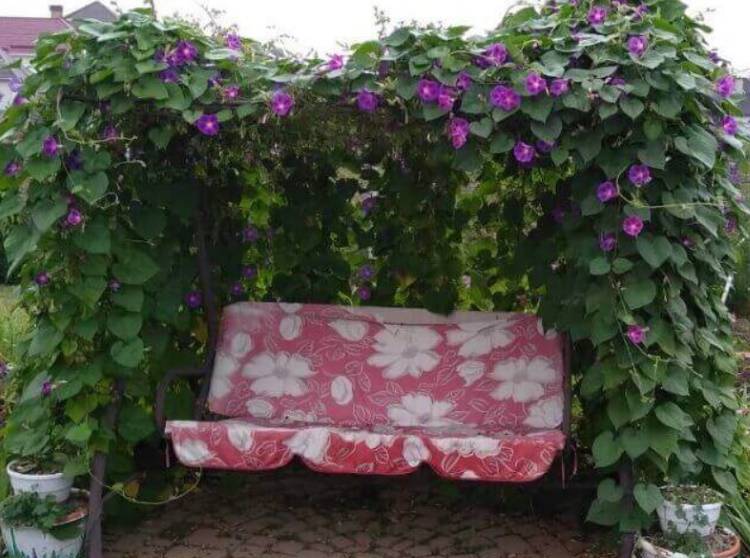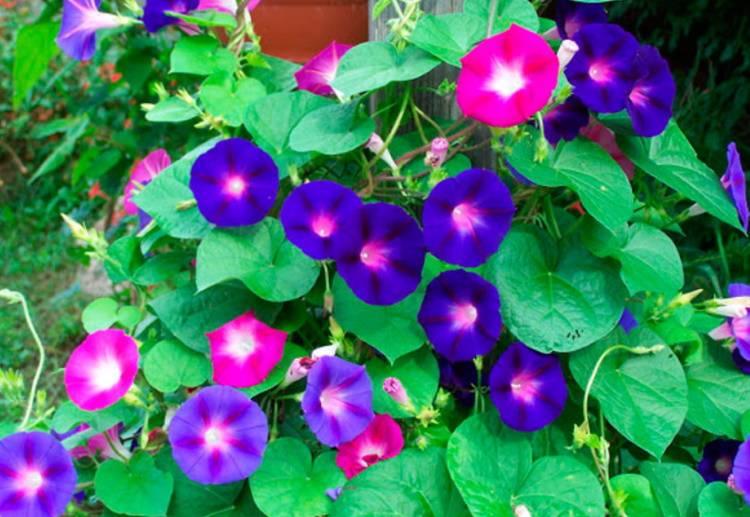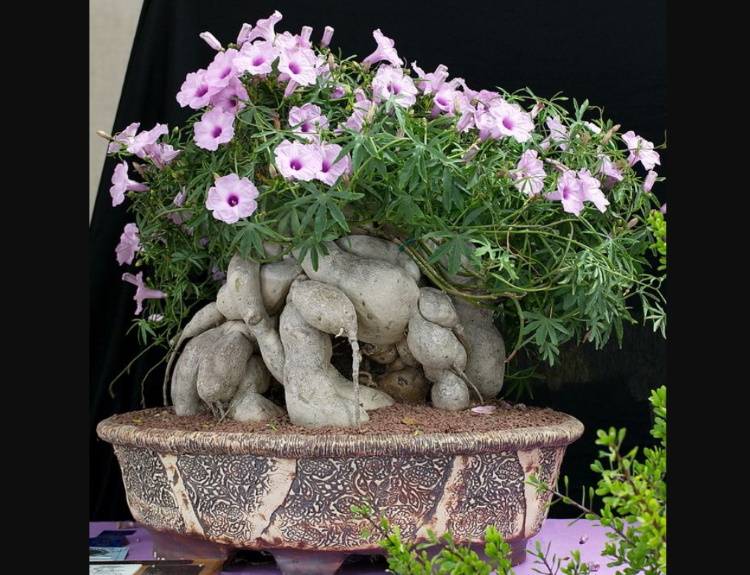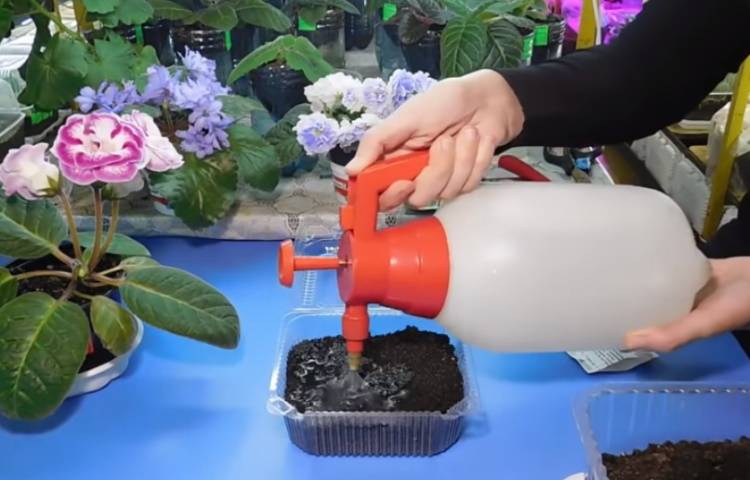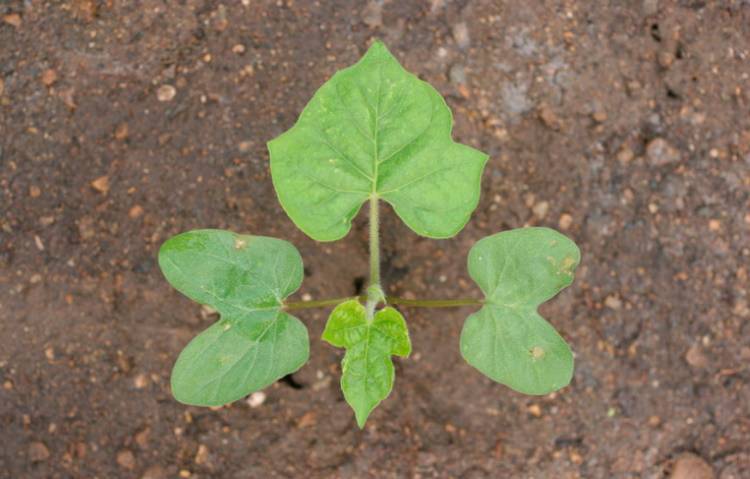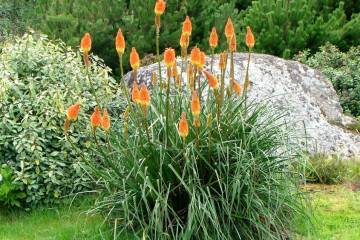Morning glory - planting and care in the open field
Content:
- The origin and appearance of the flower
- The combination of morning glory with other plants in landscape design
- Methods for growing Ipomoea in temperate climates
- Features of growing perennial morning glory
- Popular Ipomoea species for garden cultivation
- Morning glory: planting and care in the open field
- Growing from seeds
- Planting seedlings and seeds of morning glory in open ground
- Watering mode
- How to feed morning glory for abundant flowering
- Features of care during flowering
- Preparing for winter: features of care during the rest period
- Collection and storage of seeds
- Propagation by cuttings
- Potential pests and diseases
Decorative beautifully blooming vines of the morning glory flower (lat. Ipomoea) will decorate the territory near the house, garden, and personal plot. For planting and caring for morning glory flowers, all the simplest standard requirements are characteristic that are used in growing most plants.
The origin and appearance of the flower
The genus Ipomoea has 450 plant species and belongs to the Vyunkov family. In the wild, morning glory is a flower that, like a perennial herbaceous vine, grows in warm countries. The plant is not hardy, therefore, in temperate climates, it is grown as an annual. In tropical and subtropical climates, perennial morning glories can appear as small trees and shrubs.
Modern species of Ipomoea originate from the wild plants of South America and Africa. Breeders have created a huge number of varieties based on the simplest plants that have whole, widening towards the center and tapering towards the top, leaves on long petioles, curly stems, inflorescences in the form of gramophones.
A large number of inflorescences on long, elastic and dense stems, densely covered with foliage, make the morning glory an irreplaceable decoration and protective fencing of open balconies, verandas, loggias.
A variety of colors of inflorescences allows you to create flower arrangements when decorating gazebos, building walls, fences, columns, mesh and lattice fences. In parks of flowers, curling on special supports, they create a variety of green figures, bizarre designs.
Combination of morning glory with other plants in landscape design
In landscape design, morning glory vines are used to decorate not only vertical, but also horizontal surfaces of various carpet plantings, various flower beds. A flower bed made of a mixture of morning glories of multicolored colors against the background of coniferous trees looks spectacular.
Ipomoeans open their phonographs early in the morning. If the sky is overcast, then the bloom will continue all day, the flowers will close on a bright sunny afternoon. This is due to the fact that plants do not tolerate excess ultraviolet radiation.
Early species begin to bloom in early summer, their flowering can last until the onset of cold weather. The combination of hybrids and varieties with different flowering periods creates a constantly blooming green wall. From when the various types of morning glory begin to bloom, the overall flowering period of the entire flower arrangement will depend.A tall hedge of flowers tied to supports will become a beautiful background for lilies and daylilies, phloxes and irises, garden geraniums, asters, marigolds, peonies.
Methods for growing Ipomoea in temperate climates
In Russia, morning glories with a one-year development cycle are grown in the open air and perennials are grown in indoor conditions. Annual morning glories do not shed their leaves with the onset of cold weather, continue to bloom profusely, and then simply freeze when the air temperature drops to negative values.
Features of growing perennial morning glory
Any variety of morning glory, grown outdoors in an individual volumetric pot, can become perennial. Before the cold weather, the branches of the flower are cut, thinned and shortened, leaving 2-3 stems in the pot up to 15-25 cm high.For winter, the plant is brought into a cool room with an air temperature of no more than 15 ° C and no lower than 7 ° C.
Make sure that the plant does not need moisture, but water it only after the surface layer of the soil dries up. With the onset of heat, the flower is taken out into the open air and partially, so as not to damage the roots, they replace the depleted soil substrate with a fertile one, adding nutritious soil.
Succulent Ipomoea species are easiest to grow indoors. In the area of the root system, they form a caudex - a thickening in which nutrients and moisture are stored. Planting and caring for caudex perennial morning glories is slightly different from those for plants with a normal root system. Caudexes are watered less often, but more often they are fed.
Popular Ipomoea species for garden cultivation
For outdoor cultivation in temperate climates, gardeners use several dozen varieties of Ipomoea. The most popular are those varieties, inflorescences, leaves and stems of which are painted in bright shades.
Morning glory Batat
The plant is grown not only for its beautiful sky-blue, pink, white or light purple inflorescences, but also for the edible thickened roots. Sweet potato leaves can have green and purple hues. The length of the stems of edible varieties does not exceed 30-40 cm, ornamental ones reach 2 m.
Ipomoea purple
It belongs to the most popular loaches of the genus Ipomoea. In regions with a long warm season, the length of flower stems can reach 7 m. Inflorescences have a variety of colors. A variety of purple morning glory - Paradise stars - forms single multi-colored inflorescences on its stems.
Morning glory Kvamoklit
4 plant varieties are grown in the open field. Among them:
- morning glory Kvamoklit red. Grows vines up to 3 m long, green, heart-shaped leaves up to 9 cm in size, ruby inflorescences of 5 petals. For the original flowering, this variety is called the beauty star;
- feathery. It got its name from the shape of the leaves, cut into narrow strips. Has a second name - Cypress Liana. Forms small scarlet star inflorescences up to 2 cm in diameter, up to 4 cm long;
- Slaughter is a hybrid of the red and feathery forms of Ipomoea. The wide leaves of the plant are dissected into 7 pairs of elongated blades. Inflorescences have a yellow-white tint of a narrow part and a red-pink extended one.
Morning glory trip
The Blue Sky variety is a psychedelic plant that is grown like a regular annual liana.
Morning glory scarlet
This liana is photophilous, requires a mandatory garter, forms funnel-shaped inflorescences with a diameter of 5-6 cm with a color similar to red fire. It is planted in windless areas of the garden on loose deoxidized soil.
Morning glory: planting and care in the open field
For planting in open ground, 2 methods are used - planting seedlings and sowing seeds.
Growing conditions
Liana-like plants are best planted near supports, to which they can be tied up, after they have grown a sufficient length of stems. The growing area should be protected from the wind, slightly shaded from the bright midday sun. The soil must have neutral acidity, can have any composition, but must be loose.
Low-fertile lands provoke the plant to early flowering and seed formation. Thus, it seeks to quickly fulfill its duty to nature and continue its family until the moment when the growing conditions become even worse.
Growing from seeds
It is not difficult to grow Ipomoea from seeds because they remain viable for 3-4 years. A distinctive feature of seeds is that they have a dense outer shell and germinate for a very long time without scarification (artificial damage to the shell). The seeds are rubbed with sandpaper or pierced with a needle and then soaked in warm water. The temperature of 50 ° C must be maintained for 12 hours. After a day, the seeds are slightly dried and sown.
Sowing seeds for seedlings
For growing seedlings, small plastic mini-greenhouses or peat pots are prepared. They are filled with a moist soil mixture consisting of 1 part of leafy soil, 1 part of high-moor peat, 2 parts of sand. The seeds are not deepened, but simply laid out on the surface of the soil and sprinkled with a thin layer of dry soil mixture. Then the soil is watered from a spray bottle with small drops of water.
Planting containers are placed in a mini-greenhouse, regularly ventilated and watered. Seedlings appear in 12-15 days. When sowing several seeds in one container, the seedlings have to be seated in individual cups. The picking of plants must be carried out in a gentle way, the seedlings must be planted so that the earthen lump around the roots remains intact.
Care of grown seedlings and seedlings
Seedling pots should be on a windowsill, well-lit by the sun in the morning. At noon, the plants are shaded. The transplanted seedlings take root in a new place for 10 days. During this time, it is necessary to prevent the soil from drying out.
After rooting, the tops of the shoots are shortened by 1-0.5 cm. Pinching of young plants is necessary to prevent them from stretching and to push to the formation of lateral shoots.
Planting seedlings and seeds of morning glory in open ground
Seedlings are planted in open ground with the onset of stable heat and the warming of the surface layer of the soil to a temperature of at least 10 ° C. Seeds can be sown at soil temperatures above 15 ° C. Sowing seeds in unheated soil will have a bad effect on the timing of their germination.
Watering mode
Ipomoea are intolerant of heat and drying of the surface layer of the soil, they do not die under such conditions, but stop their development. The lack of moisture will also affect the number of buds formed. You can understand that the flower needs watering by the state of its leaves - they drop, become lethargic.
Water the plants with settled, non-chlorinated water at street temperature after the soil dries up in the root zone. The frequency of watering depends on the climatic conditions of the growing region.
How to feed morning glory for abundant flowering
After the vines grow flower stalks and form buds, the flowering period begins, which means that the plant's energy and energy is actively spent. At this time, plants need phosphorus, potassium and trace elements, which are in the required proportions in finished preparations. You can use combination products with a minimum nitrogen content.
Features of care during flowering
If it is not planned to collect flower seeds, then the closed inflorescences are cut off. This will preserve the attractiveness of the bushes.
Preparing for winter: features of care during the rest period
Plants that are grown as annuals, after they die off, are removed from the garden - disposed of or sent to a compost pit. Lianas, grown in the garden in flower pots as perennials, shorten the shoots as much as possible and bring them into the house or greenhouse.
Flowers overwintering in indoor conditions should be kept in a cool room in the light. Plants are rarely watered, after the soil dries up to a depth of 1-2 cm, they are not fed until the onset of heat.
Collection and storage of seeds
The collection of seeds is carried out after the seed box dries up, and the seed in it acquires a color corresponding to the varietal indicators. Usually this period occurs in late September - early October. The collected seeds are dried and stored at room temperature in a tissue or paper bag.
Propagation by cuttings
Long vines are not propagated by cuttings. Ipomoea with short shoots (a variety of sweet potatoes) can be planted by rooting cuttings. This is done in late April - early May. Shoots are cut into pieces, in each of the parts there should be 2-3 internodes.
The lower parts of the cuttings are placed in soft water at room temperature, the containers are covered with a glass jar or bag. The roots on the cuttings begin to grow back after 3-5 days. After they lengthen a little, the cuttings are transplanted into open ground.
Potential pests and diseases
Plants weakened by drought can attack aphids and spider mites. To destroy them, plants are treated with systemic insecticides. Ipomoea can suffer from root rot when the soil is overflowing.
In unfavorable conditions - with a large difference between day and night air temperatures - signs of fungal diseases may appear on the leaves and stems: white rust, anthracnose. For the prevention and treatment of fungal infections, fungicidal biological products are used.
Ipomoea are beautiful and unpretentious plants, which are very easy to care for and which are pleasant to grow, because they will always be a wonderful decoration of a flower bed and a garden, a courtyard and a park.

